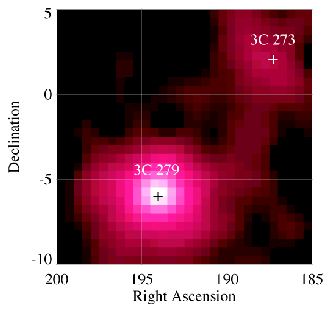
Blazars are highly variable, powerful sources of radiation that show spectacular outbursts. These flares are observed in all energies and last from years down to days or even minutes. In some objects outbursts in different spectral bands seem to be correlated. In particular, optical flares are sometimes delayed with respect to the gamma-ray flares e.g. in case of a 3C 279 a lag of 10 days has been found. Mateusz Janiak, Marek Sikora, Rafał Moderski from the Copernicus Astronomical Center with Krzysztof Nalewajko from University of Colorado and Greg Madejski from Stanford have studied the model in which the lag is a result of a steeper drop with distance of the energy density of external radiation field than of the magnetic energy density. The results are in a paper „On the origin of the gamma-ray/optical lags in luminous blazars”.
The authors have shown that, with such a model, it is possible to explain lags with both signs and lags can occur for any ratio of energy densities. Investigating light curves and studying lags between optical and gamma-ray wavebands in blazars can provide a very powerful tool to resolve the structure of relativistic jet and its radiation environment.
In the picture: EGRET Image of 3C 279 and 3C 273.
Credit: EGRET Team






